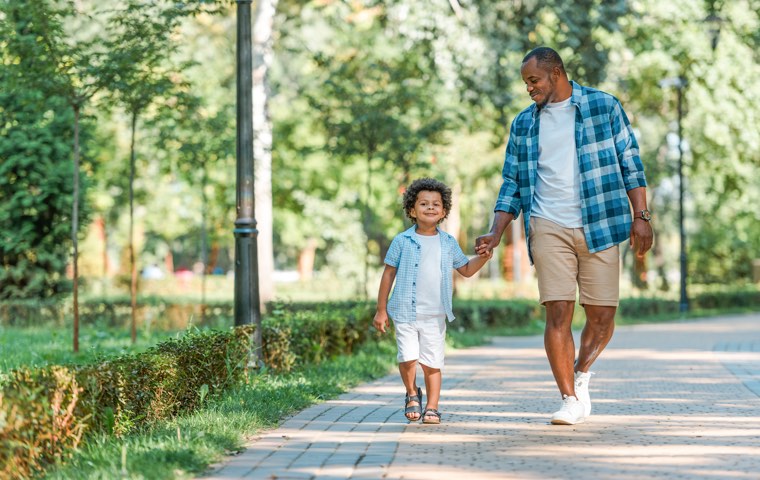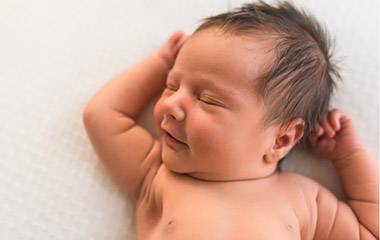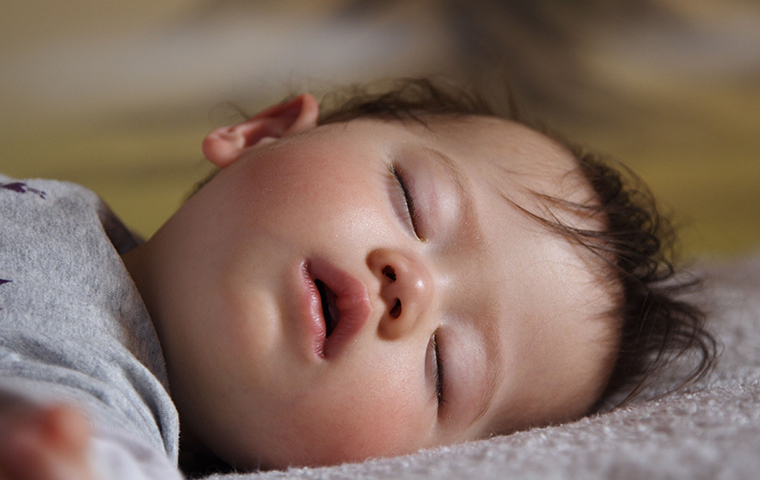Dos and Don'ts for Pacifiers
By GetParentingTips.com staff
Read Time: 7 Minutes
Is it safe to use a baby pacifier?
"Which are the best pacifiers for newborns?"
"What's the best pacifier for a breastfed baby?"
"How do I keep a pacifier in baby's mouth?"
Most new parents have a lot of questions about pacifiers, and it's no wonder - a 2017 study reported that about 85% of babies use a pacifier at least some of the time!
Babies are born with a natural instinct to suck, and many babies find sucking on a pacifier (or their fingers or thumb) to be very soothing. In this article, we'll share some helpful pacifier facts and information so you can make informed decisions about when and if to offer a pacifier to your baby.
For being so small, pacifiers raise a lot of big questions.
Pacifier safety is an important starting point, but there is more to consider about giving your baby a pacifier.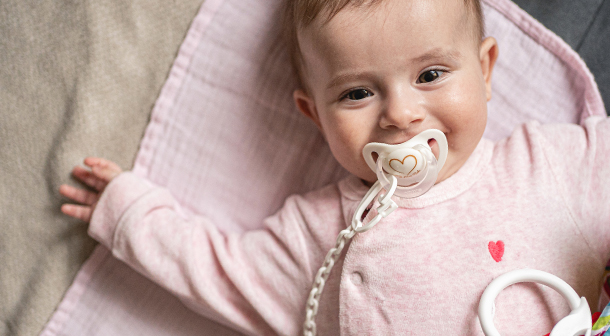
Do pacifiers interfere with breastfeeding?
Many doctors and lactation consultants recommend not introducing pacifiers to newborns. Early and frequent sucking helps to build up the mother's milk supply and establish good breastfeeding patterns.
The American Academy of Pediatrics (AAP) recommends that baby pacifiers be introduced after breastfeeding is well established, usually around 3 or 4 weeks of age. Waiting on offering a pacifier helps new parents spot their baby's early hunger cues such as lip smacking, sucking on hands, and making sucking motions. It also prevents newborns from developing "nipple confusion" or "nipple preference" when they switch between a pacifier and the breast.
Several studies have looked at the relationship between baby pacifiers and early weaning from breastfeeding. And the jury is still out. Many stopped short of saying that pacifiers cause babies to wean earlier, but they did find that using a pacifier may be a sign of breastfeeding difficulties or reduce motivation to breastfeed. However, other research suggests that early pacifier use does not create breastfeeding difficulties or cause early weaning in full-term babies whose mothers are motivated to breastfeed. The bottom line is that you have to do what is right for you and your baby. Be sure to talk to your child's pediatrician about any concerns.
Do baby pacifiers cause ear infections?
It's unclear, but maybe. Studies have found that pacifiers may cause trouble with babies' inner ear tubes. Other studies have found that breastfeeding protects babies against ear infections. Ear infections are most common between the ages of 6 months and 3 years. If your child is prone to ear infections, you should consider limiting or discontinuing the use of a baby pacifier. Again, be sure to talk to your child's pediatrician and make sure you keep track of when your child has an ear infection.
Do baby pacifiers carry a lot of germs?
Pacifiers can carry germs, so be sure to wash your baby's pacifier often. If your baby is sick you should clean all of her (or his) pacifiers with hot, soapy water or sterilize them before each use. Pacifiers should be cleaned every time they fall on the floor or ground and should never be shared. Don't be tempted to put the pacifier in your own mouth to clean it - that's a sure way to transfer germs between you and your baby.
Need parenting help now?
The Texas Parent Helpline is available 24/7.
- Call 833-680-0611
- Chat with us
- Text 833-680-0611
Do baby pacifiers prevent SIDS?
Putting your baby to sleep with a pacifier may help prevent Sudden Infant Death Syndrome (SIDS), though researchers aren't sure why. Doctors suspect that babies may sleep lighter while sucking on a pacifier and roll less during their sleep. To protect against sleep-related death, pacifiers should be used in conjunction with other safe sleep practices, including putting your baby to sleep alone, on her back in her crib, with no pillows, blankets, bumpers, or stuffed animals. It's okay if the baby pacifier falls out while she sleeps. If your baby wakes up fussy, you can offer her the pacifier, but you should never try to put a pacifier back in a sleeping infant's mouth.
Are pacifiers bad for my baby's teeth?
Yes - eventually. Thumb sucking and pacifiers can cause teeth to become crooked and actually change the shape of your child's mouth. The American Dental Association (ADA) says it's best to get rid of pacifiers by the time your child is 4 years old, if not sooner. This will help your child's teeth and jaw muscles develop normally.
The ADA recommends pacifiers over thumb sucking because it is easier for parents to discontinue their use when the time comes. However, the ADA also cautions parents against cleaning baby pacifiers by putting them in your own mouth because that can transfer cavity-causing germs to your child. Tooth decay can begin as soon as the baby's first teeth come in, usually around 6 months.
If your baby chews on her pacifier, throw it away. Chewing could cause tiny pieces to break off and create a choking hazard. Chewing on the pacifier instead of sucking on it may be a sign your baby is ready to wean off of pacifiers.
How do I keep the pacifier in my baby's mouth?
Follow your baby's lead on this one. Pacifiers should be a baby-led comfort device - they're only useful if the baby wants them. If your baby spits out the pacifier or turns her head when you offer the pacifier, she is done with the pacifier for now. You can offer it again later, but never force a pacifier into a baby's mouth.
Some babies just don't like pacifiers, so pay attention to your child's response.

Baby Pacifier Dos and Don'ts
Every family has to make their own decision about whether or not to offer pacifiers. If you do decide to give your child a pacifier, make sure you follow these tips.
DO:
- Wait until your baby has gotten the hang of breastfeeding before introducing a pacifier because the sucking mechanism for each is different. If you start with a pacifier too soon, there's a chance it could interfere with successful breastfeeding.
- Try other ways of soothing your baby before offering a pacifier, like cuddling, rocking, or singing. If you use a pacifier immediately, you may miss the underlying reason for why your baby is fussy. Maybe she has a tummy ache, needs a diaper change, or is hungry or sleepy.
- Make sure the pacifier is clean and dry. If a pacifier falls on the ground, rinse it with hot soapy water.
DON'T:
- Force a pacifier into a baby's mouth or put it back in if it falls out when the baby is asleep.
- Allow siblings to share pacifiers or clean pacifiers by putting them in your own mouth. This can transfer germs that cause tooth decay or illness.
- Coat the pacifier in sugar or honey. This can lead to tooth decay. Plus, giving honey to a child under one year of age can cause a serious illness called botulism.
- Use clips or attachment cords designed for pacifiers when your baby is asleep. They could get wrapped around a baby's neck.
- Attach a pacifier to your baby's crib, playpen, stroller or around your baby's neck or wrist with a ribbon, string or cord. Babies can be strangled this way. Clips and attachment cords designed for pacifier use are ok to use only when your baby is awake and you are watching her.
- Use the baby pacifier in any way that is contrary to the manufacturer's safety recommendations.
- Use a pacifier as a substitute for attention or other kinds of comfort such as soothing, cuddling, rocking, or singing.
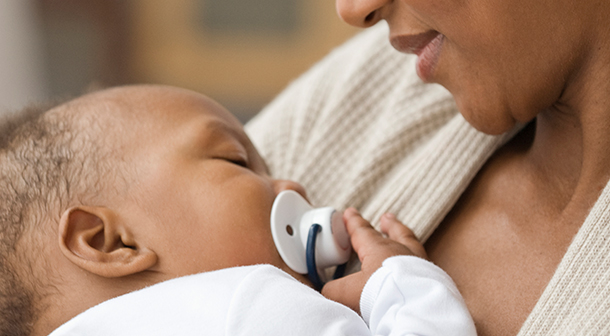
But wait, which baby pacifier is best?
Choosing a pacifier is kind of like choosing underwear - it's personal. There isn't one pacifier that's best for infants, no matter what the pacifier companies try to tell you. You'll probably have to try several kinds to see which pacifier your child prefers! Here are some things to consider:
- Size: Many manufacturers make pacifiers in different sizes. There are smaller pacifiers for newborns and larger ones for older children.
- Shape: Pacifiers come in many shapes. Some have flat tips to mimic the shape of the nipple. Others promise to be "orthodontic" to help keep babies' jaws in the correct position as they suck.
- Material: Latex and silicone are two common materials. We recommend choosing a silicone pacifier as they tend to be sturdier and are top-rack-dishwasher-safe. In addition, some babies, just like adults, can be sensitive or allergic to latex.
When you do find that special pacifier that your baby likes best, buy several of them. Pacifiers have a way of getting lost and falling on the ground, so having a backup supply will keep you prepared.


